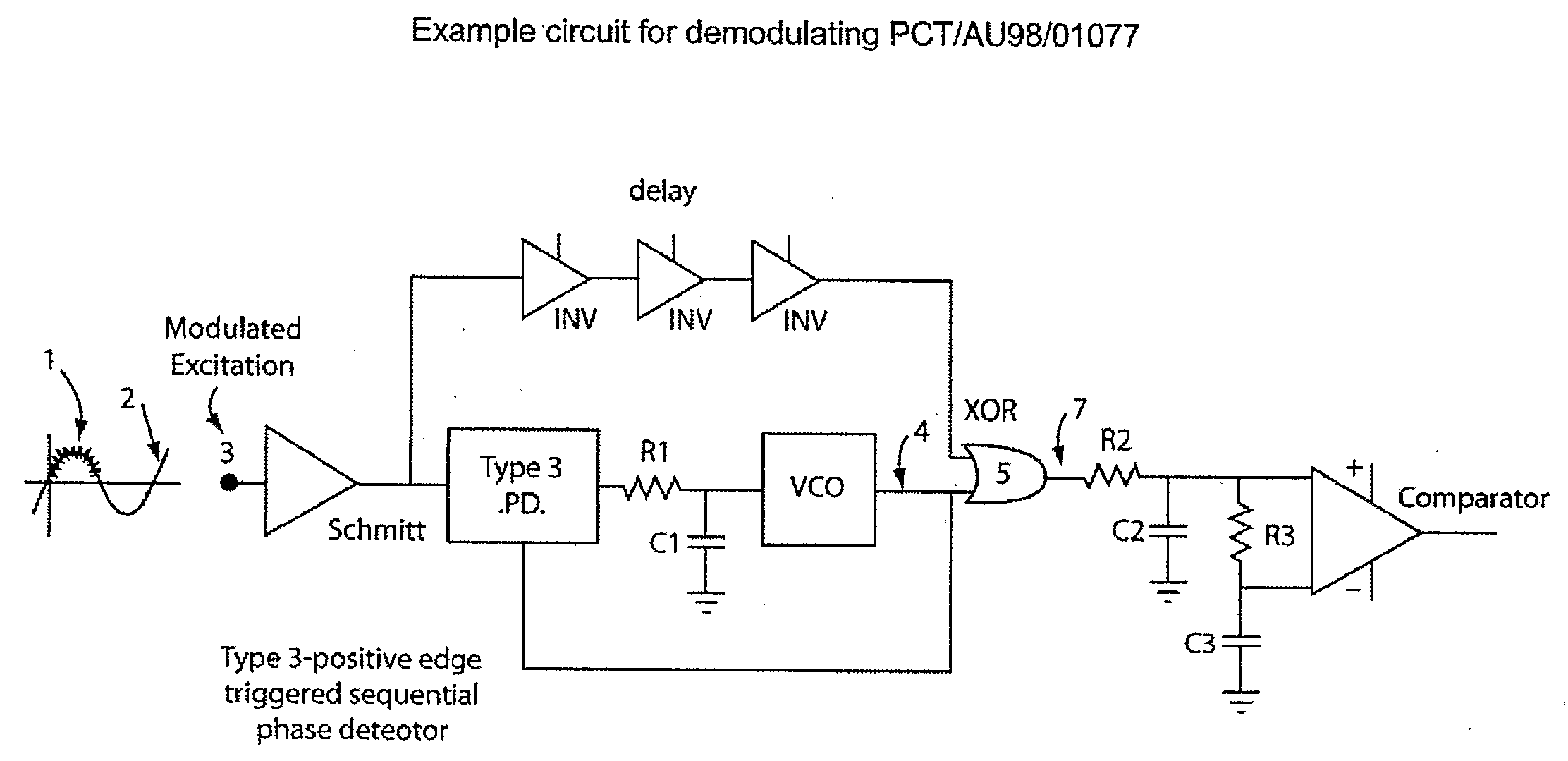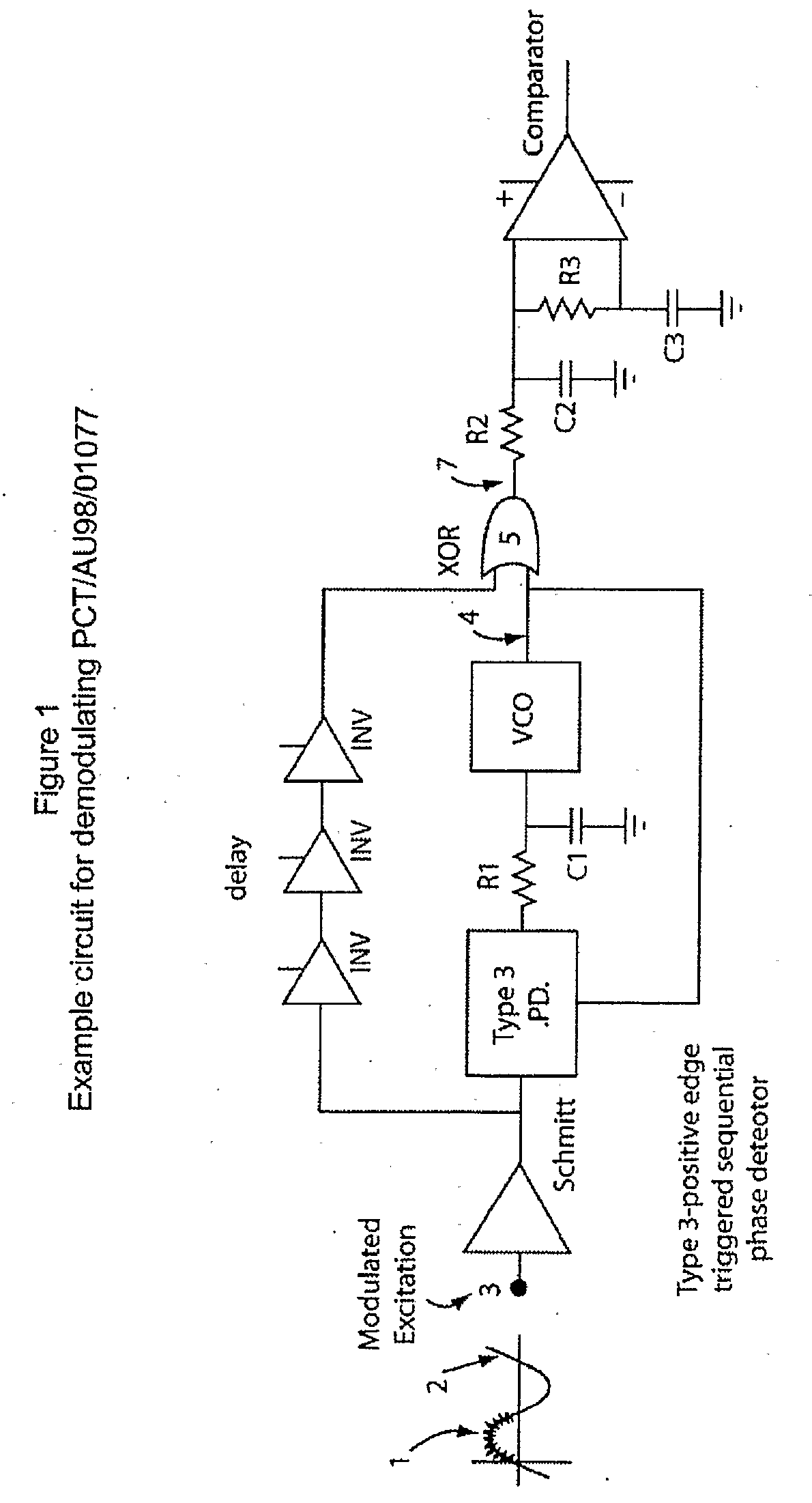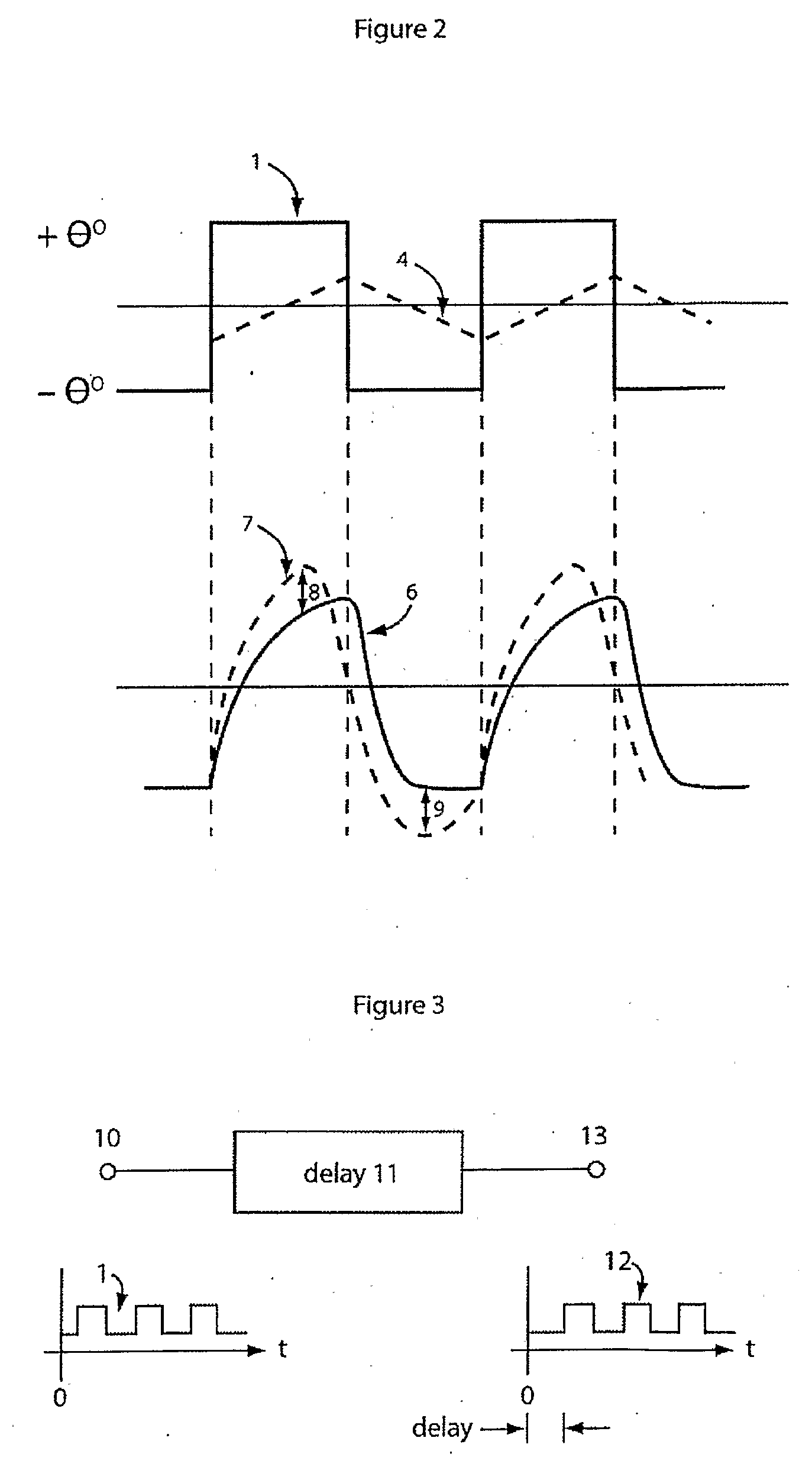Method and Apparatus Adapted to Demodulate a Data Signal
- Summary
- Abstract
- Description
- Claims
- Application Information
AI Technical Summary
Benefits of technology
Problems solved by technology
Method used
Image
Examples
Embodiment Construction
[0039]Referring to FIGS. 1 and 2 together, the signal 1 represented in FIG. 2 is a phase signal formed on a carrier signal 2 which is modulated excitation 3 input in FIG. 1. FIG. 2 illustrates more clearly the phase signal I which is imposed on the carrier signal 2 of FIG. 1. Also illustrated in FIG. 1 is a Phase Locked Loop (PLL) tracking signal 4. That is the effect of the phase signal on the circuit configuration of FIG. 1, in operation, is that the PLL ‘drifts’.
[0040]Also illustrated in FIG. 2 is a representation 6 of an ‘ideal’ recovered signal from the output of the XOR gate 5 of FIG. 1. However, in practice; the recovered signal from the output of the XOR gate 5 in FIG. 1 is more like signal 7 illustrated in FIG. 2. In FIG. 2, the difference between the ‘ideal’ signal 6 and the actual recovered signal 7 is shown, in part, by numerals 8 and 9. This difference is referred to as ISI. The inventors have found that the PLL has an inherent operational transient response which cause...
PUM
 Login to View More
Login to View More Abstract
Description
Claims
Application Information
 Login to View More
Login to View More - R&D
- Intellectual Property
- Life Sciences
- Materials
- Tech Scout
- Unparalleled Data Quality
- Higher Quality Content
- 60% Fewer Hallucinations
Browse by: Latest US Patents, China's latest patents, Technical Efficacy Thesaurus, Application Domain, Technology Topic, Popular Technical Reports.
© 2025 PatSnap. All rights reserved.Legal|Privacy policy|Modern Slavery Act Transparency Statement|Sitemap|About US| Contact US: help@patsnap.com



